Welcome to our blog, where we dive into the captivating world of Pietrain pigs! Originating from a rich history, these pigs have become renowned for their distinct physical characteristics and numerous advantages. From their origins to their size and weight range, we’ll explore every aspect of Pietrain pigs in an engaging and easy-to-understand manner.
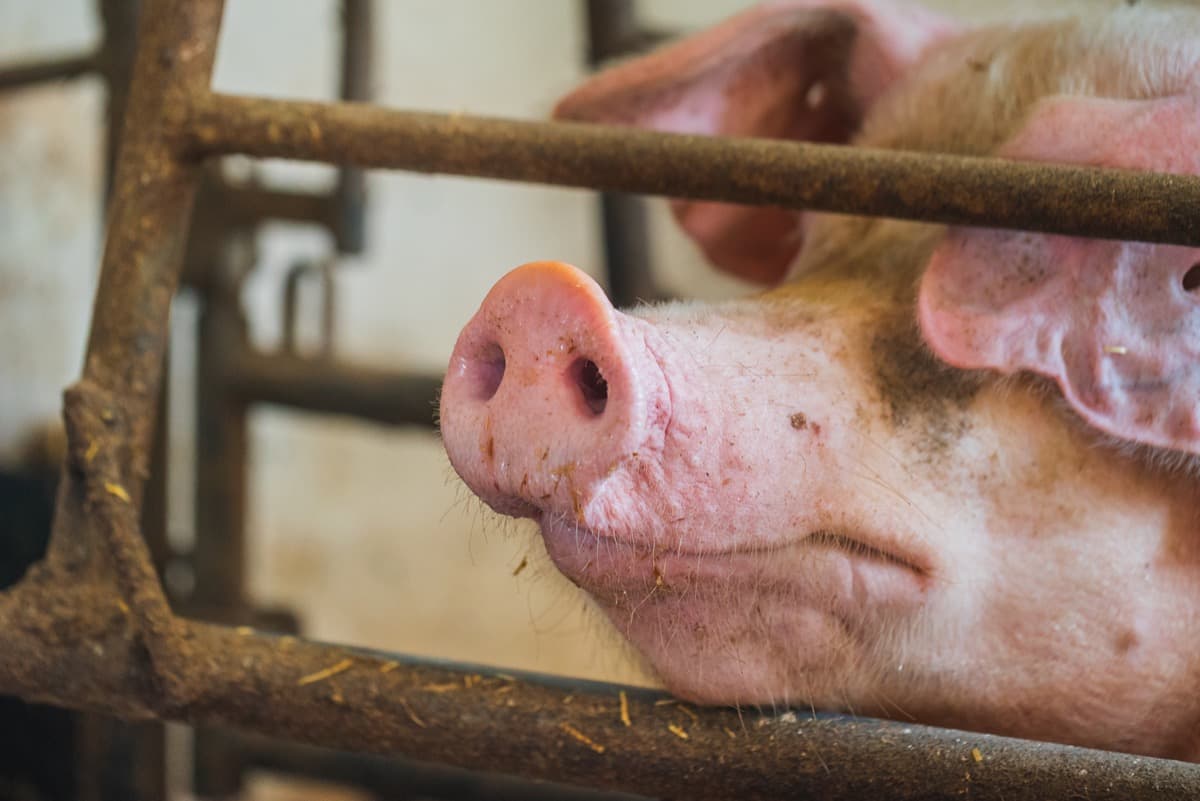
Get ready to learn about their incredible meat quality, nutrition requirements, and even their unique temperament and behavior. Join us as we unravel the pros and cons of raising these remarkable animals, shedding light on their profitability and market demand. Let’s embark on this exciting journey of Pietrain pig facts together!
Pietrain Pig Facts
Introduction to Pietrain Pigs as a Breed
Pietrain pigs, named after the village of Pietrain in Belgium, have a fascinating origin story. During the challenging period of pork production in 1950-1951, this breed was first introduced in the region. While they gained popularity locally, Pietrain pigs were exported to countries like Germany, Spain, and the United Kingdom. Originating from Piétrain near Charleroi, Belgium, these pigs have a mysterious lineage.
Farmers in Belgium aimed to develop a unique breed with a high quantity of lean meat and excellent carcass traits. Although the specific swine breeds used in creating Pietrain are unknown, local breeds with a double muscling gene are believed to be selectively bred to improve desirable traits. After years of careful breeding, Pietrain pigs were officially recognized as a distinct breed in 1950, and their reputation continues to grow.
Pietrain Pig Origin and History
Pietrain pigs, a Belgian breed of domestic pig, originate in Wallonia, specifically in the village of Pietrain, located in Jodoigne, Walloon Brabant. The breed emerged around 1920 and was officially recognized in 1950. The exact origins of Pietrain’s pigs still need to be determined. Still, it is believed that the farmers in Piétrain may have noticed and selectively bred for a genetic mutation that caused muscular hypertrophy.
Since the 1960s, Pietrain pigs have also been reared in Germany, primarily in regions like Baden-Württemberg, Nordrhein-Westfalen, and Schleswig-Holstein, where they are used as sires for crossbreeding purposes. In the 1980s and 1990s, researchers at the faculty of veterinary medicine of the Université de Liège conducted crossbreeding experiments with stress-resistant Large White stock to develop a Piétrain strain without the gene for porcine stress syndrome, which the original Pietrain stock was particularly susceptible to.
In case you missed it: [Key Rules to Start Pig Farming in Denmark: Business Plan, Breeds, Setup Cost, Proft, and Management
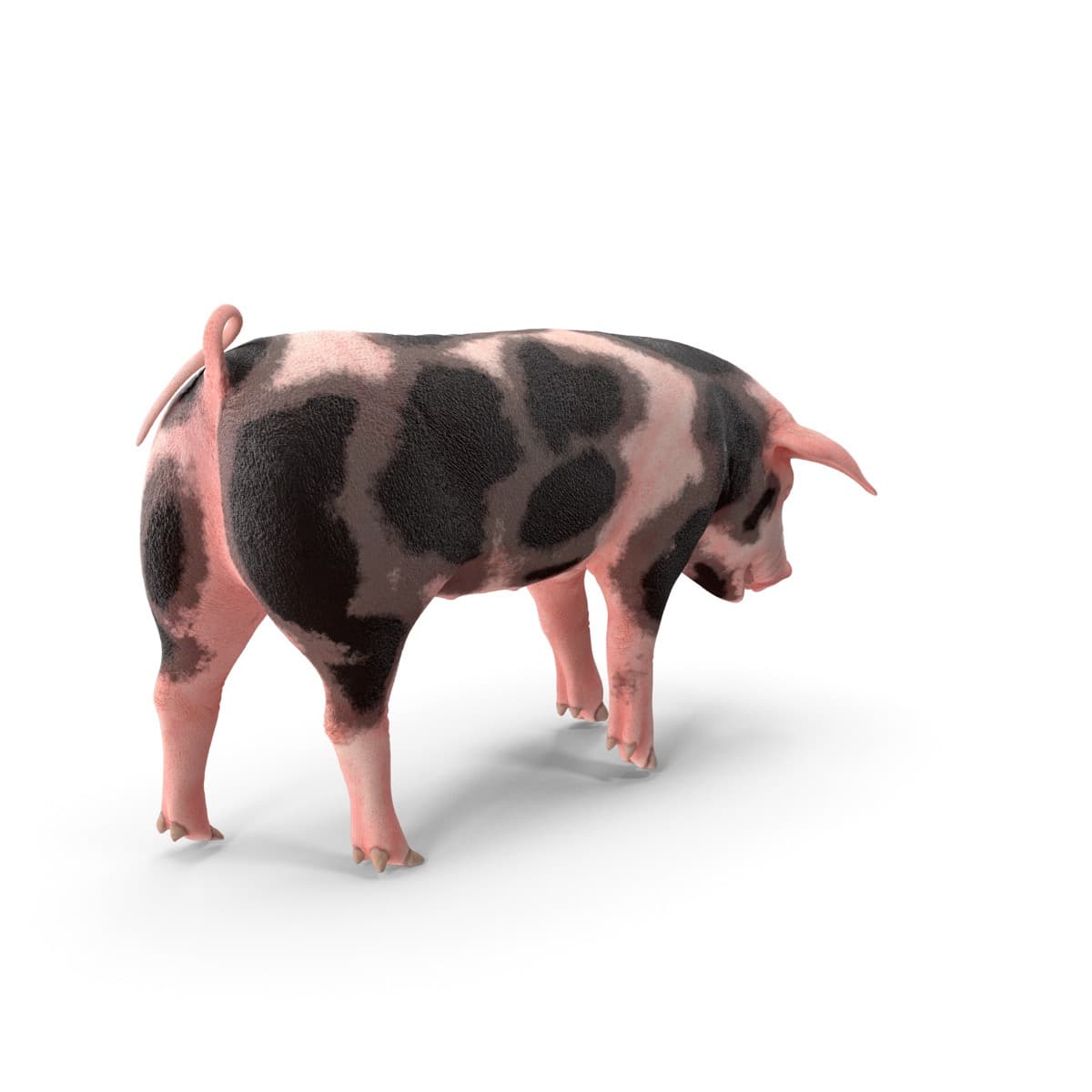
Pietrain Pig Size and Weight Range
Pietrain pigs exhibit a specific size and weight range. The average weight of a mature male Pietrain pig is around 300 kg, while the females tend to weigh approximately 280 kg. In terms of height, adult males typically measure around 90 cm, while females reach an average height of about 85 cm. These measurements give us an idea of the physical dimensions of Pietrain pigs, highlighting their substantial size compared to other pig breeds.
Physical Characteristics of Pietrain Pigs
Color: Pietrain pigs typically have a greyish-white coat with black spots. Some individuals may have solid black or solid white coloration. The black spots are scattered across the body, often forming distinct rings of lighter pigmentation with white hair, giving them their characteristic piebald markings.
Hair: The hair of Pietrain pigs is short and thick. It is white in areas without black spots and darker, but not black, in regions with black spots.
Size: Pietrain pigs are of medium size. Females have an average height of around 2.7 feet at the shoulder, while males reach approximately 3 feet. The average length of these pigs ranges from 5 to 6 feet.
Head, Nose, Cheeks, Neck: The head of Pietrain pigs is lightweight with a straight profile and a broad forehead. The nose is also broad and straight, while the cheeks are not very prominent. The neck is relatively short and slender.
In case you missed it: Pig Waste Management and Sustainable Manure Utilization
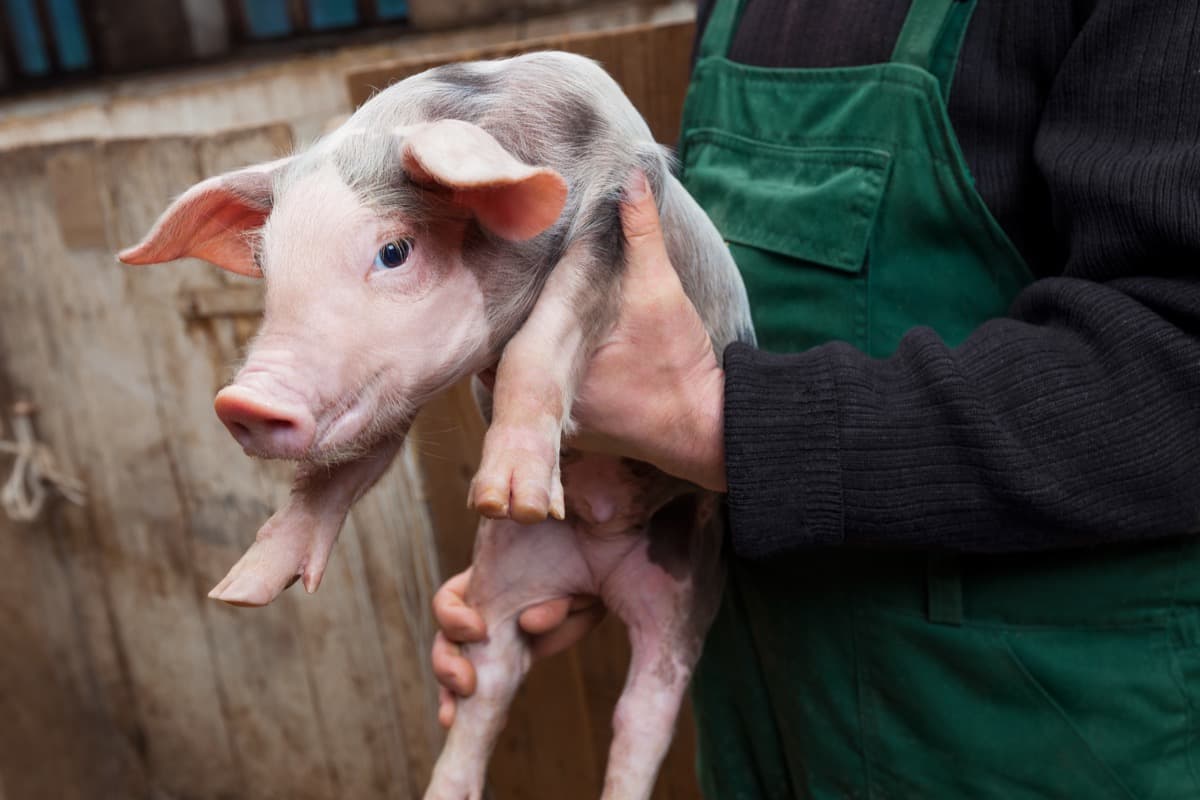
Ears: Pietrain pigs have short, broad, and erect ears. The tips are slightly bent forward, allowing for good vision without obstructing it.
Body, Shoulders, and Legs: The body of Pietrain pigs is cylindrical, with a massive and muscular trunk. The chest is broad and deep. The back is long, straight, broad, and flat, while the belly is well-tucked. The shoulders are well-developed and muscular. The legs are straight, long, and highly muscular, especially around the ham area.
Teats and Teeth: Pietrain pigs have 12 teats and typically possess 44 teeth, including incisors, canines, premolars, and molars.
Lifespan and Growth Rate: Pietrain pigs have a lifespan of approximately 10 to 15 years. They are known for their fast growth rate, reaching a weight of 220 lbs within 128 days of life. They can gain an impressive 1.4 to 1.7 lbs per day during their early growth stage, thanks to their efficient feed-to-muscle conversion.
Weight and Slaughter Time: The weight of Pietrain pigs ranges from 485 lbs to 570 lbs. Boars weigh 530 to 570 lbs, while sows weigh 485 to 520 lbs. These pigs are ready for butchering when they reach 250 to 280 lbs, usually within 5 to 6 months, depending on diet and management practices.
Advantages of Raising Pietrain Pigs
- Extreme Muscling: Pietrain pigs are known for their exceptional muscling, translating to a high meat-to-bone ratio. This feature makes them desirable for meat production.
- Very Lean Meat: Pietrain pigs have lean meat, making it a preferred choice for consumers seeking low-fat and high-protein pork products.
- Fast Growth Rate: These pigs exhibit rapid growth, allowing farmers to achieve market weight in a shorter period. This contributes to improved efficiency and profitability in pig farming.
- Early Sexual Maturity: Pietrain pigs reach sexual maturity early, enabling faster breeding cycles and increased production potential.
- Suitable for Crossbreeding: Pietrain pigs are compatible with crossbreeding, making them valuable for improving specific traits when crossed with other breeds like Duroc, Large White, or Landrace.
- Good Litter Size: They can produce litters of a considerable size, resulting in increased productivity and potential for higher sales.
- Long Lifespan: Pietrain pigs generally have a longer lifespan than other pig breeds, providing farmers with extended production and breeding opportunities.
- High-Quality Carcass: The meat of Pietrain pigs is known for its high quality, with desirable attributes such as tenderness and flavor.
In case you missed it: Disease Prevention and Management in Commercial Pig Farms

Disadvantages of Pietrain Pig Breed
- Potential Reproductive Issues: Pietrain pigs may face reproductive challenges such as difficulty conceiving or delivering larger litters, requiring careful management and monitoring.
- Susceptibility to Heat Stress and Joint Issues: Due to their heavily muscled bodies, Pietrain pigs can be more prone to heat stress and joint problems, necessitating proper housing and environmental control.
- Lack of Mothering Skills: Pietrain sows may exhibit limited maternal instincts, which can result in inadequate care of piglets. Extra attention and intervention may be required during the farrowing process.
- Low Milk Production in Sows: Some Pietrain sows may have lower milk production than others, affecting piglet growth and overall litter health.
- Difficulty in Inbreeding: Pietrain pigs have a higher risk of detrimental effects from inbreeding due to their genetic composition, necessitating careful selection and controlled breeding practices.
- Sensitivity to Stress: Pietrain pigs can be more sensitive to stress, impacting their health and performance. Appropriate handling and management techniques are essential to minimize stress levels.
- Aggressive Behavior in Stressful Situations: In stressful situations, such as handling or transport, Pietrain pigs may exhibit more aggressive behavior, requiring additional precautions for worker safety.
Pietrain Pig Temperament and Behavior
- Pietrain pigs are generally considered to have a docile temperament, although they can be more challenging to raise than other pig breeds like Gloucestershire Old Spots pigs.
- These pigs are known to be more nervous, which can occasionally lead to aggressive behavior, especially in stressful or perceived dangerous situations. They may display aggression towards animals, pigs, and even humans.
- In a stress-free environment, Pietrain pigs usually exhibit calm behavior and do not pose a threat to humans. However, it is advisable to closely supervise small children around them.
Pietrain Pig Meat Quality and Taste
- Pietrain pig meat is incredibly lean, with a remarkable percentage of 66.7% lean meat. This is significantly higher than other pig breeds like Mangalica, which typically have around 30-35% lean meat.
- The yield of defatted loin from Pietrain pigs is substantial, averaging 24.5% lean meat.
- The hams of Pietrain pigs have an average lean meat content of 24.6%.
- Pietrain pigs have a lean-to-fat ratio of 9.2 to 1, higher than breeds like Duroc, with a 5 to 6 to 1 ratio.
- Pietrain pig meat is not heavily marbled, as the fat content is relatively low, usually with a quarter-inch layer in certain cuts. The perception of this aspect can vary based on individual preferences and desired outcomes for the meat.
- Pietrain pig carcasses are known for their high-quality meat content, with an impressive percentage of 83%.
- The meat from Pietrain pigs is commonly used for grilling and roasting as fresh cuts, incorporated into sausages and ham products, and utilized in various processed pork items such as meatballs or meatloaf.
- Like meat from other pig breeds, Pietrain pig meat is a rich source of essential minerals and omega-3 and omega-6 fatty acids, iron, zinc, phosphorus, selenium, thiamine, vitamin B6, and vitamin B12.
In case you missed it: How to Build a Pig Pen for Backyard Farming: A Step-by-Step Guide
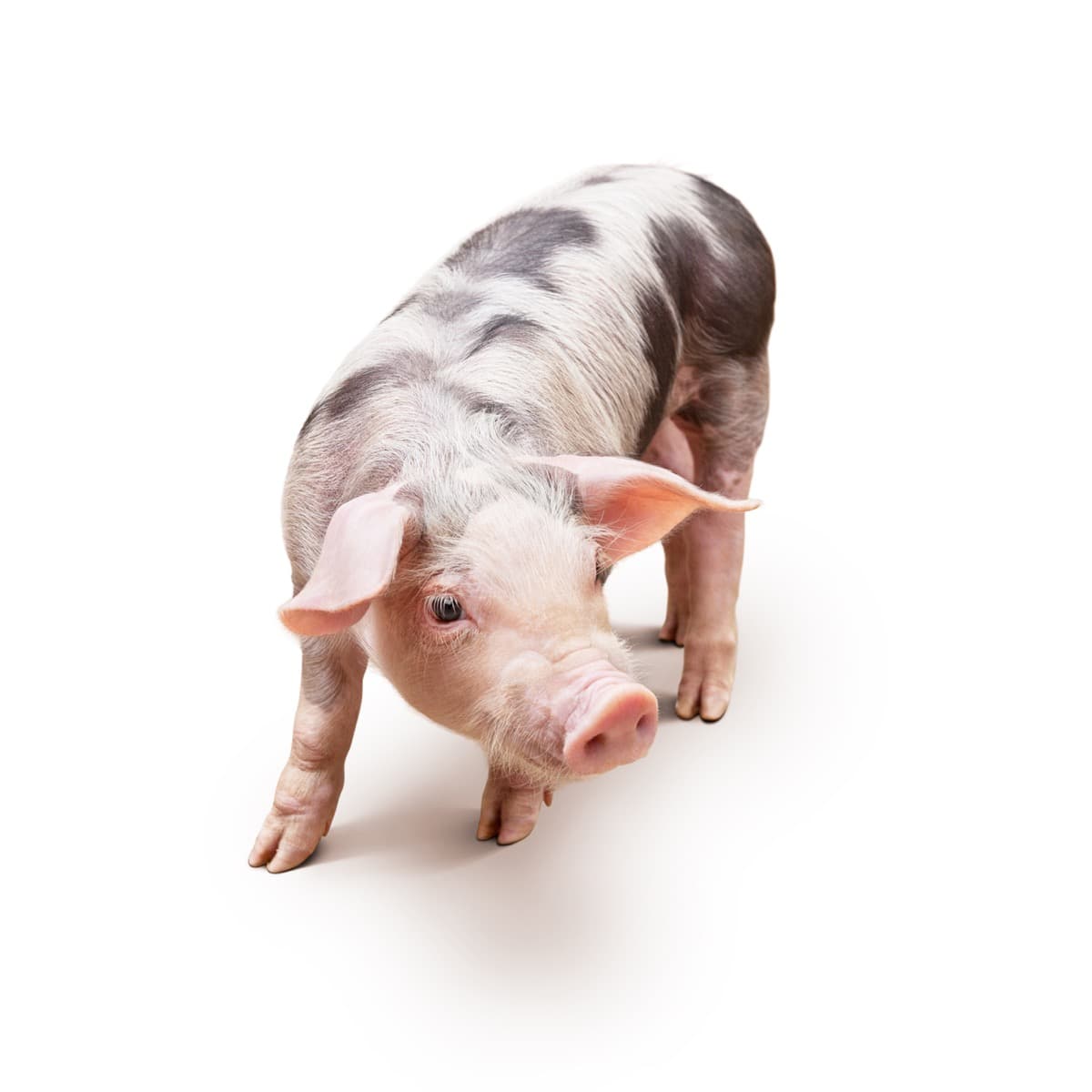
Pietrain Pig Feed and Nutrition Requirements
For space, each pig should have 8 to 10 square feet of space, whether in a shelter, barn, or pen. Pietrain pigs are not highly active but still need enough room to move around comfortably. Ideally, a pen for ten pigs should be at least 80-100 square feet, 30 Pietrain pigs per acre. Regarding feeding, while Pietrain pigs have natural foraging behaviors, they heavily rely on the feed provided.
A proper diet should include protein and easily digestible carbohydrates, including grains, legumes, vegetables, fruits, eggs, roots, meat, fish, and dairy. It’s important to avoid excessive grains as Piétrain pigs have poor digestion ability. Supplementing their diet with necessary vitamins, minerals, and salt is crucial, as Pietrain pigs have a fast metabolism and require adequate calorie intake to maintain their muscular build.
Pietrain pigs can be raised in various environments, including barns, pens, or outdoor systems like pasture-based or free-range setups. Good ventilation and adequate space are important for their housing. They adapt well to different environments but prefer mild climates, struggling with extreme cold and heat.
Breeding and Reproduction of Pietrain Pigs
Pietrain pigs are commonly used for commercial purposes as pure breeds or for improving other pig breeds, particularly finisher males. They are used in simple crosses to produce F1 piglets for commercial purposes. They are also utilized in three-way crossings, where heterozygous females from high-performance breeds are crossed with a third-breed male. This results in improved carcass quality and performance in the progeny.
When breeding Pietrain pigs, waiting until the sow is at least ten months old is recommended, considering their limited mothering skills and low milk production rate, which may not be sufficient to feed more than six piglets. The average litter size is 8 to 10 piglets; supplemental feeding is necessary for larger litter.
Crossbreeding Pietrain pigs with other breeds, such as Duroc, Landrace, and Large White, is common, as it significantly improves certain traits. Inbreeding within the Piétrain breed is generally not recommended due to potential genetic defects and health issues. Maintaining clean bedding areas, providing clean water, monitoring muscle development, and avoiding excessive inbreeding are important aspects of raising Pietrain pigs.
Pietrain Pig Health Issues and Care
- Pietrain pigs can be prone to heat stress in hot and humid climates due to their low-fat content.
- Their extreme muscling makes them susceptible to muscular disorders such as stiffness and strains.
- Respiratory diseases can affect Pietrain pigs, so proper ventilation and hygiene are important.
- Pietrain sows may experience reproductive issues, including low milk production and difficulties during farrowing.
- The rapid growth and heavy muscling of Pietrain pigs can lead to joint issues, and providing bedding can help support their joints.
Pietrain Pig Farming Profitability and Market Demand
- The price of Piétrain pigs varies across different regions, with increasing demand for their lean meat contributing to their value.
- In India, the average price of a Piétrain pig is approximately Rs 14,000 per 100 kg.
- Prices may also vary based on the gender of the pigs, with sows generally being more expensive than boars.
- Raising Piétrain pigs as a small to medium business may not yield substantial profits, but it can help offset overall expenses.
- Selling boars and sows can generate income, with typical prices ranging around $300 for boars and $250 for sows.
- Selling piglets from $50 to $70 can also contribute to revenue.
- Consideration should be given to the expenses involved in raising Piétrain pigs, including shelter construction, bedding, electric fencing, and feed costs.
- Piétrain pigs rely heavily on provided feed rather than grazing, increasing food consumption and potentially higher feed expenses.
- For homesteaders looking to produce their lean meat with low-fat content, raising Piétrain pigs can be a beneficial option, providing a consistent supply of meat for personal use.
In case you missed it: Successful Pig Farm Management and Operational Strategies: A Complete Guide
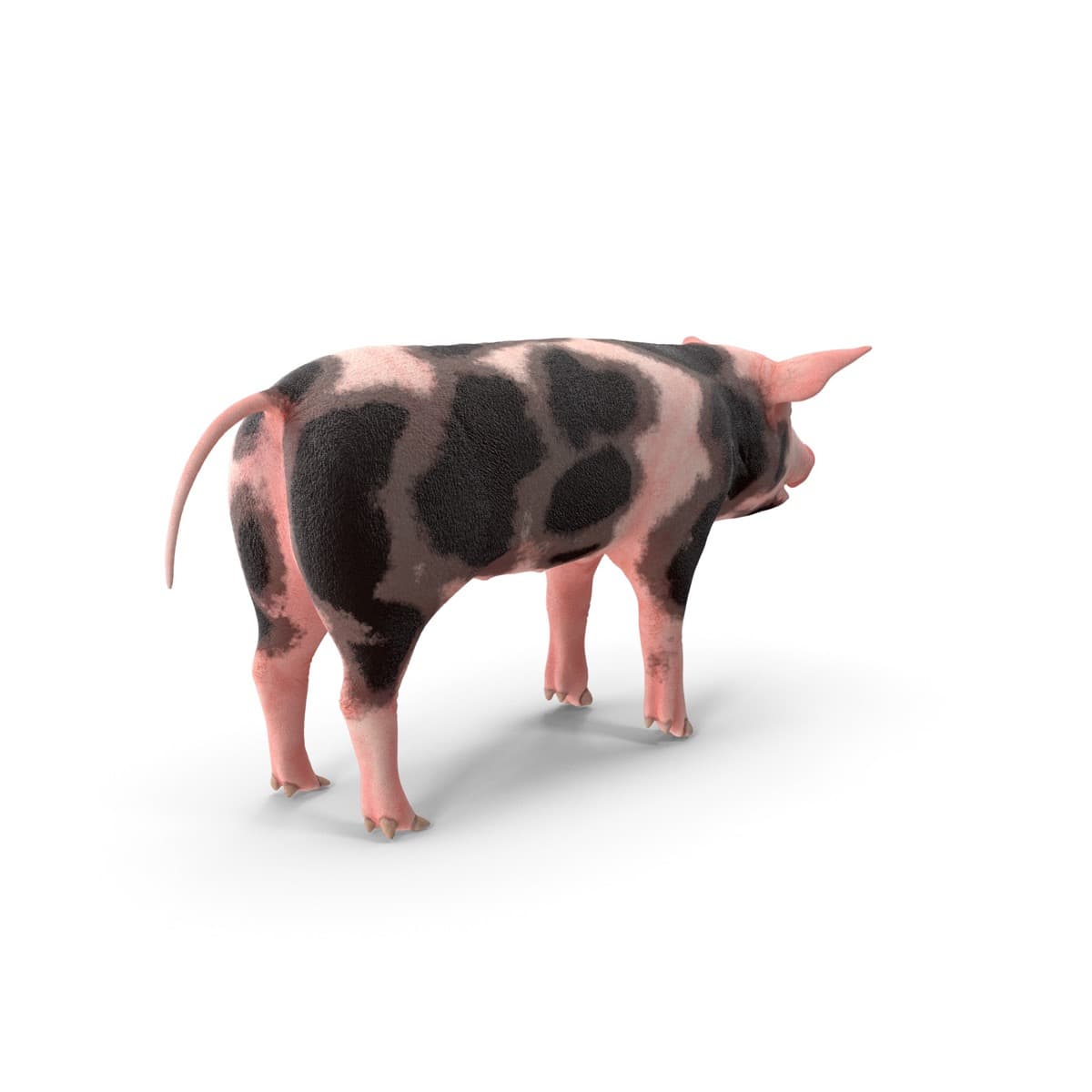
Conclusion
Piétrain pigs are a Belgian breed known for their muscular build and lean meat. They have a distinctive coat pattern and are popular for crossbreeding. While they offer advantages in meat quality, their extreme muscling can lead to health issues.
- How to Build a Low-budget Goat Shed: Cheap Ideas and Tips
- Goat Farming Training Programs in India: A Beginner’s Guide
- Types of Pesticides Used in Agriculture: A Beginner’s Guide
- Economical Aquaculture: A Guide to Low-Budget Fish Farming
- 15 Common Planting Errors That Can Doom Your Fruit Trees
- How to Make Houseplants Bushy: Effective Tips and Ideas
- Innovative Strategies for Boosting Coconut Pollination and Yield
- Pollination Strategies for Maximum Pumpkin Yield
- The Complete Guide to Chicken Fattening: Strategies for Maximum Growth
- Natural Solutions for Tulip Problems: 100% Effective Remedies for Leaf and Bulb-Related Issues
- Revolutionizing Citrus Preservation: Towards a Healthier, Greener Future
- Natural Solutions for Peony Leaf and Flower Problems: 100% Effective Remedies
- Maximizing Profits with Avocado Contract Farming in India: A Comprehensive Guide
- Natural Solutions for Hydrangea Problems: 100% Effective Remedies for Leaf and Flowers
- The Ultimate Guide to Choosing the Perfect Foliage Friend: Bringing Life Indoors
- From Sunlight to Sustainability: 15 Ways to Use Solar Technology in Agriculture
- The Ultimate Guide to Dong Tao Chicken: Exploring from History to Raising
- The Eco-Friendly Makeover: How to Convert Your Unused Swimming Pool into a Fish Pond
- Mastering the Art of Delaware Chicken Farming: Essentials for Healthy Backyard Flocks
- 20 Best Homemade Fertilizers for Money Plant: DIY Recipes and Application Methods
- How to Craft a Comprehensive Free-Range Chicken Farming Business Plan
- Brighten Your Flock: Raising Easter Egger Chickens for Beauty and Bounty
- How to Optimize Your Poultry Egg Farm Business Plan with These Strategies
- Subsidy for Spirulina Cultivation: How Indian Government Schemes Encouraging Spirulina Farmers
- Ultimate Guide to Raising Dominique Chickens: Breeding, Feeding, Egg-Production, and Care
- Mastering the Art of Raising Jersey Giant Chickens: Care, Feeding, and More
- Ultimate Guide to Raising Legbar Chickens: Breeding, Farming Practices, Diet, Egg-Production
- How to Raise Welsummer Chickens: A Comprehensive Guide for Beginners
- How to Protect Indoor Plants in Winter: A Comprehensive Guide
- Ultimate Guide to Grow Bag Gardening: Tips, Tricks, and Planting Ideas for Urban Gardeners
- Guide to Lotus Cultivation: How to Propagate, Plant, Grow, Care, Cost, and Profit
- Agriculture Drone Subsidy Scheme: Government Kisan Subsidy, License, and How to Apply Online
- Ultimate Guide to Raising Araucana Chickens: Breed Profile, Farming Economics, Diet, and Care
- Bringing Hydroponics to Classroom: Importance, Benefits of Learning for School Students
- Ultimate Guide to Raising Polish Chickens: Breed Profile, Farming Economics, Diet, and Care
- Ultimate Guide to Raising Australorp Chickens: Profile, Farming Economics, Egg Production, Diet, and Care